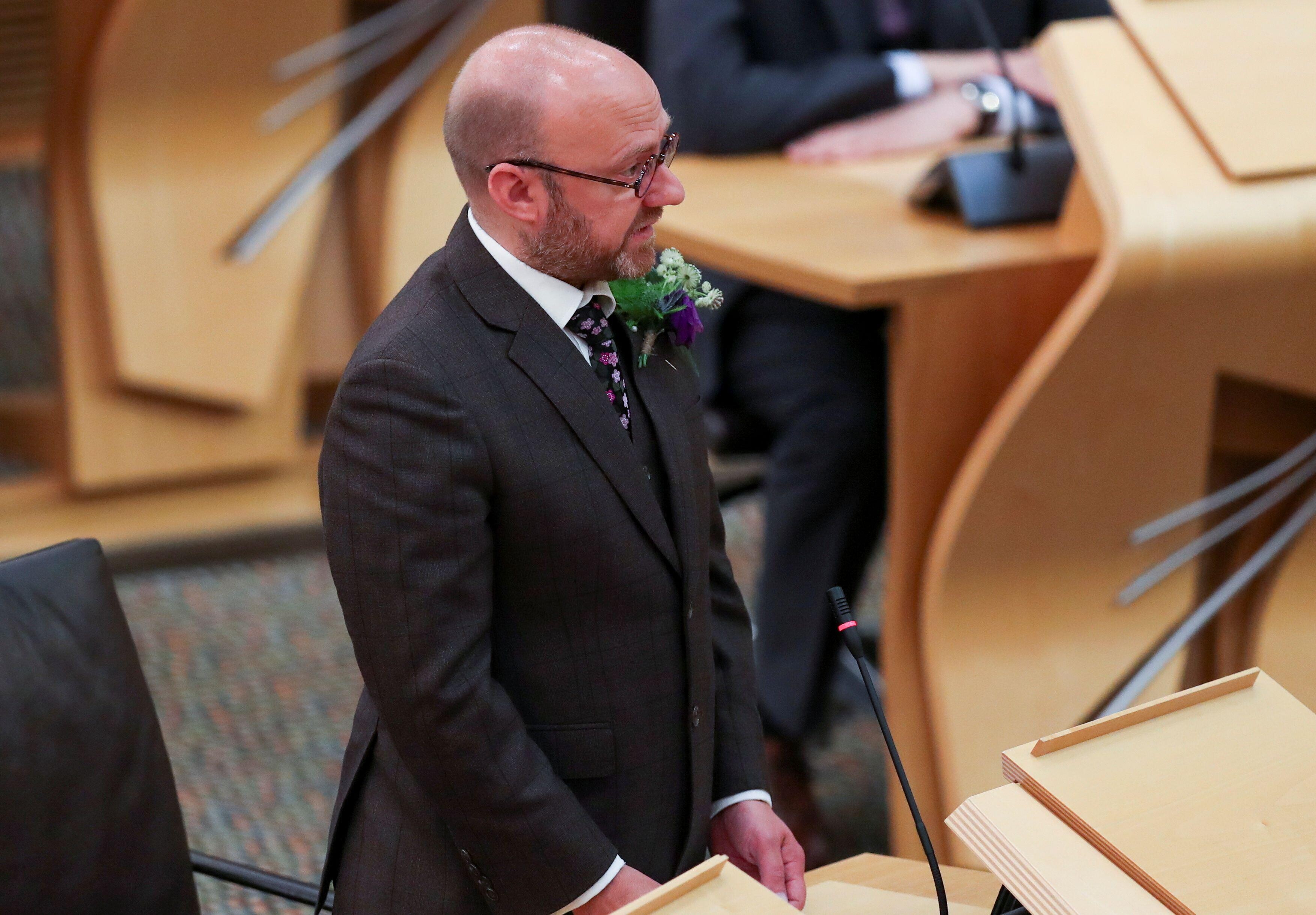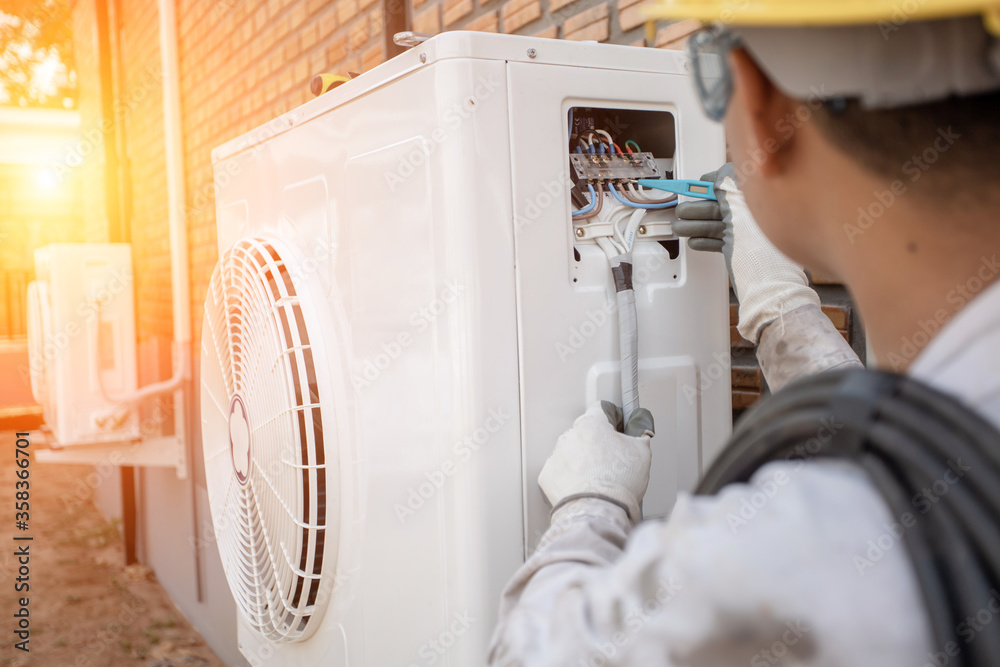Building for the future: The challenge of decarbonising Scotland's homes
Patrick Harvie is nothing if not an ambitious man. Having set his sights on political dominance at a tender age, as a 10-year old the co-leader of the Scottish Greens reportedly told his mother he would one day become prime minister of the United Kingdom.
He has not got there yet, but taking his party from political obscurity to the heart of government – earning himself a ministerial brief in the process – is not a bad start.
It is only fitting, then, that Harvie’s first major announcement since the Greens began co-operating with the SNP and he was named minister for zero carbon buildings, should be wildly ambitious in scope and scale.
Unveiled at the beginning of October – a full week and a half before the UK Government made a similar announcement of its own – Harvie’s heat and buildings strategy undertakes to convert a million homes and 50,000 non-domestic buildings to zero-emissions heating systems by 2030, the overall aim being to reduce the level of greenhouse gases coming from the built environment by 68 per cent within the next nine years.
It pledges that the majority of Scottish homes will be performing to an energy efficiency rating of at least C by the same cut-off date, with the rest catching up within the following three years.
And, it outlines a £1.8bn spending bonanza that will see the money allocated to social housing and public sector buildings doubled to “at least £200m” each while a further £400m will be funnelled into “large-scale heat and energy efficiency projects” during this parliament.
If it all sounds too good to be true, that is probably because it is.

Scottish Greens co-leader Patrick Harvie has unveiled an ambitious plan to decarbonise Scottish homes by 2030
“The target of 2030 is challenging – it’s only nine years away,” says Niall Kerr, an energy research fellow at the University of Edinburgh.
“A lot has happened so far [in the energy transition] but that’s been with the things that are arguably easier to do. We now have the more difficult stuff to do and heat is at the top of that table.”
The case for addressing how homes in particular are heated is an easy one to make. The Climate Change Committee, an independent statutory body that advises the UK and devolved governments on climate strategy, says around 15 per cent of the UK’s greenhouse gas emissions come from homes, with most of that derived from heat.
Indeed, in its recently published report on the economic impact of decarbonising heat, the Scottish Government noted that close to four-fifths (78 per cent) of the energy used in Scottish homes powers heating systems. As the vast majority of those systems (81 per cent) are reliant on gas, the implication is clear: if Scotland is to have any hope of achieving its overall net-zero target by 2045, the population at large must be weaned off its dependence on gas first. It is going to be much easier said than done.
Much has been made in recent weeks about how heat pumps hold the key to the domestic energy transition, but as they operate at much lower temperatures than traditional boilers they are only suitable for use in well-insulated homes. For great swathes of properties in Scotland’s cities, where single-glazed, poorly insulated tenements dominate, no amount of retrofitting will make them a viable option.
“Heat pumps aren’t suitable for a lot of homes because those homes are really energy inefficient,” says Cara Jenkinson, cities manager at sustainable energy charity Ashden.
“That raises questions of inequity because it could really push energy costs up if they were put into the wrong place.”
Insulating all homes could offer one potential solution, Jenkinson says, but that would come with its own challenges given the short timeframe it would have to be done in.
“There are real worries about the quality of what would be done – we could be looking at a Grenfell-style disaster,” she says.
Even then, many homes would still not be able to support heat-pump technology due to things such as planning considerations – older buildings in conservation areas could not have the unit that operates the pump fitted to their exterior.
A lot has happened so far [in the energy transition] but that’s been with the things that are arguably easier to do. We now have the more difficult stuff to do and heat is at the top of that table.
At the same time, alternatives such as hydrogen power remain in their infancy – a pilot in Fife saw 300 homes fitted with hydrogen boilers last year, but it will be another three years before it is known whether that has been a success – while there are significant logistical challenges involved in connecting existing homes to large-scale community heat networks, particularly at speed.
Despite these challenges, the fact such a large proportion of Scotland’s homes are socially rented – just under a quarter at the time of the last census – has given the country something of a headstart on its heat strategy and could in part explain why Harvie believes Scotland can achieve its built-environment target five years ahead of England and Wales.
Aaron Hill, director of policy and memberships at the Scottish Federation of Housing Associations, notes that, thanks to significant levels of investment over the past few decades, over half the country’s social housing stock already has a good energy efficiency rating compared with two-fifths in the private rented and privately owned sectors.
Yet while that means those homes are in a better position to be fitted with technology such as heat pumps, Hill stresses that those living in the socially rented sector are the most vulnerable to fuel poverty. Addressing one of those issues – and the Scottish Government has a statutory duty to ensure no more than five per cent of households are living in fuel poverty by 2040 – has the potential to exacerbate the other.
“There are huge numbers of people in fuel poverty in social housing and, ultimately, we need to do this [transition] in a way that puts them first,” he says.
“We don’t yet have a plan that says tackling the climate emergency will also tackle fuel poverty. If people are switching from gas to electricity, traditionally electricity has been more expensive.”
Another problem is that the government’s own strategy for eradicating fuel poverty appears to be at odds with the ambition of the heat and buildings plan.
Warmworks, a joint venture between Energy Saving Trust, Changeworks and Everwarm, manages the Scottish Government’s fuel poverty scheme on its behalf. Since being founded in 2015, the organisation has helped 25,000 households across the country, providing between 10,000 and 15,000 with new boilers. In the main, these boilers have been powered by gas.
“The majority of what we’ve done over the past six years has been about gas boilers,” says Warmworks managing director Ross Armstrong.
“For people in fuel poverty gas has still been the cheapest way to heat their home. If they have a broken-down gas boiler the best thing to do from an efficiency point of view is to give them a new gas boiler. That’s one of the challenges – the Scottish Government wants to move away from gas to decarbonising people’s homes, but even though prices are going up gas is still the cheapest option.”
Another challenge is that, even though Warmworks can and does install heat pumps in some situations, householders need to be completely re-educated on how household heat should work if such technologies are going to prove a success. That, says Armstrong, appears to be missing from the equation.

Heat pumps are not a panacea when it comes to decarbonising homes
"The unit itself is not a panacea – the way the householder reacts with the heating system is really important too,” he says.
“You have to tell them how it works, how they should operate and control it, the temperatures they should aim for in certain rooms at certain times. People will adapt but the technology won’t do that by itself. The building’s got to be right, the design of the system has got to be right and the householder has to be confident that they know how to do it.”
For Hill, the final point is key. “There’s a reason home owners aren’t jumping at this stuff at the moment,” he says.
“It’s expensive, but they also don’t know much about it – it’s unfamiliar. Housing associations are in a good position because they have lots of engagement with their tenants, but if the Scottish Government wants to take everyone on that journey it’s really important it considers the amount of time that will take.
"We don’t want to end up with a situation where we’ve got tenants, who are often in a vulnerable position, with heating systems they can’t operate.”
The problem with giving people new heating systems they do not know how to work is obvious, but relatively easy to solve. What will be more tricky is communicating to the entire population – many of whom remain sceptical given the personal costs they will have to incur – why those systems are necessary and how they will enable everyone to play a part in the energy transition.
From that point of view there is still a considerable amount of work to be done: the negative messaging around disaster, death and destruction has been mastered, but the positive stories around better futures and everyone playing a part have yet to be properly conveyed.
“There needs to be a public awareness campaign,” says Jenkinson at Ashden. “That’s going to be really important because there’s a lack of awareness of the different solutions, what people should do and how they should prioritise home retrofits.
"The targets are incredibly ambitious so there need to be far more incentives for everyone. Fuel poverty has to be prioritised, but the able to pay sector needs some kind of incentive too.”
Chris Stark, chief executive of the Climate Change Committee, believes cities like Glasgow in particular should be doing more to showcase the work being done to revolutionise people’s energy needs, which would in turn help build the narrative around why everyone needs to get on board.
“There are so many interesting stories to tell about Glasgow,” he says. “There’s a brilliant housing development in Clydebank – Queens Quay, which was the John Brown shipyard. It’s a really lovely housing development which is a mix of social and private residences and it’s going to take the heat from the Clyde to heat them.
“It’s in an old basin where they built the ships and makes use of the old heat pump. It’s putting the shipyard back in the heart of the community again and eventually the whole of Clydebank can be connected to it. It’s part of the whole story of Glasgow coming from an industrial past to a cleaner future.”
But unless such projects are brought to the wider public’s attention – unless people can see how they work and understand the benefits they can bring – many people will remain ambivalent about the need to embrace something similar for themselves. And, without the right kind of messaging the ambition of the heat and buildings strategy will never be realised. If that happens the whole net zero drive could be blown off course.
“Overall it’s a good idea to be ambitious,” Kerr says, “but there is a potential risk from not achieving targets. If we get to 2030 and we aren’t there, people could argue the case that it will dilute the 2045 target.”
Holyrood Newsletters
Holyrood provides comprehensive coverage of Scottish politics, offering award-winning reporting and analysis: Subscribe